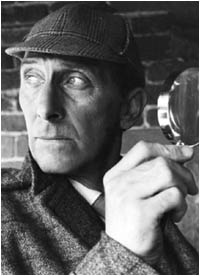Click below to link to:
![]() Reprint of article ‘Emotional processing model for counselling and psychotherapy: a way forward’ from Counselling in Primary Care
Reprint of article ‘Emotional processing model for counselling and psychotherapy: a way forward’ from Counselling in Primary Care
![]() Catharsis venting & the talking cure
Catharsis venting & the talking cure
![]() Is it possible to bottle up emotions?
Is it possible to bottle up emotions?
![]() Core components for an emotion therapy
Core components for an emotion therapy
![]() Relevance of emotional processing to psychological therapy
Relevance of emotional processing to psychological therapy
![]() References
References
![]() Back to main page
Back to main page
 Joseph Wolpe’s book ‘Psychotherapy by Reciprocal Inhibition’ 1958 was the birth of behaviour therapy as a new discipline with conditioning theory as its fundamental premise. The classical conditioning technique of systematic desensitisation proposed by Wolpe soon became a standard clinical technique for phobic conditions throughout the world and a huge amount of research on desensitisation was generated. Through various experiments, systematic desensitisation was dismantled stage by stage. It was found to work as well with or without a hierarchy (Krapfl & Nawas 1970), that imagined stimuli were not as effective as in vivo stimuli (Stern & Marks 1973, Emmelkamp & Wessels 1975) and later that relaxation was unnecessary (Gillam & Rachman 1974). In summarising the research literature, Marks (1978a, b) concluded that exposure in vivo was the key element in successful therapy and was indeed the basic mechanism operating in all successful therapies for phobic anxiety.
Joseph Wolpe’s book ‘Psychotherapy by Reciprocal Inhibition’ 1958 was the birth of behaviour therapy as a new discipline with conditioning theory as its fundamental premise. The classical conditioning technique of systematic desensitisation proposed by Wolpe soon became a standard clinical technique for phobic conditions throughout the world and a huge amount of research on desensitisation was generated. Through various experiments, systematic desensitisation was dismantled stage by stage. It was found to work as well with or without a hierarchy (Krapfl & Nawas 1970), that imagined stimuli were not as effective as in vivo stimuli (Stern & Marks 1973, Emmelkamp & Wessels 1975) and later that relaxation was unnecessary (Gillam & Rachman 1974). In summarising the research literature, Marks (1978a, b) concluded that exposure in vivo was the key element in successful therapy and was indeed the basic mechanism operating in all successful therapies for phobic anxiety.
Behavioural exposure approaches proved to be enormously successful, not only with a whole range of phobic conditions but with alcoholism (Blakey & Baker 1980), drug addiction (Childress, McLellan & O’Brien 1986), mourning (Ramsay 1977), post traumatic stress (Foa, Molnar & Cashman 1995), panic attacks (Rapee & Barlow 1989), and obsessional-compulsive problems (Foa, Kozak, Steketee & McCarthy 1992). Successful clinical results could be achieved with either graduated exposure or sudden full exposure to the problem stimulus/object.
Behaviour therapy is however a large umbrella term covering more than behavioural exposure. Some techniques such as assertion therapy, social skills training, behaviour modification programmes and token economies tended to focus on improving and developing behavioural (response) repertories more than overcoming the power of a troublesome stimulus.
Although Jacobson’s progressive muscular relaxation had proved to be redundant in treating phobic anxiety, this and various other forms of relaxation took off as a technique for soothing or calming anxiety and fears; a stress reduction or stress management industry developed, also under the heading ‘Behaviour Therapy’ but with the general assumption that stress, anxiety and other unpleasant emotions ought to be calmed, pacified or removed. Other ‘behavioural’ techniques such as thought distraction, avoidance of negative thoughts and biofeedback were similarly aimed at reducing distressing feelings. It is noteworthy that this emerged in the tranquilliser decades; they share the same basic philosophy that distressing experience must be silenced by some external procedure or substance.
 Under the same heading of ‘Behaviour Therapy’, procedures with opposite philosophies developed. Using behavioural exposure, the therapist might take an agoraphobic patient into their worst nightmare, for example a crowded supermarket, facing what they most feared, for at least forty five minutes at a time. It seems paradoxical, even perverse, that this should be regarded as therapeutic but huge amounts of clinical and research research show that it is. Alternatively, a ‘behavioural therapist’ might teach the patient to relax, develop techniques for counteracting negative thoughts, inserting positive thoughts and images, and gradually introduce the patients to fearful situations. In practice, many behavioural therapists use a combination of both methods, even though they are somewhat contradictory. Looked at from an emotional based perspective, the exposure therapist would seem to be saying ‘even though this feels awful, it is actually okay. It is safe to have really powerful unpleasant emotions like this’, while the other ‘calming’ therapist would say ‘to help you get over this, we have got to keep your feelings as calm as possible. I agree with your own analysis that strong negative feelings should be avoided at all costs’.
Under the same heading of ‘Behaviour Therapy’, procedures with opposite philosophies developed. Using behavioural exposure, the therapist might take an agoraphobic patient into their worst nightmare, for example a crowded supermarket, facing what they most feared, for at least forty five minutes at a time. It seems paradoxical, even perverse, that this should be regarded as therapeutic but huge amounts of clinical and research research show that it is. Alternatively, a ‘behavioural therapist’ might teach the patient to relax, develop techniques for counteracting negative thoughts, inserting positive thoughts and images, and gradually introduce the patients to fearful situations. In practice, many behavioural therapists use a combination of both methods, even though they are somewhat contradictory. Looked at from an emotional based perspective, the exposure therapist would seem to be saying ‘even though this feels awful, it is actually okay. It is safe to have really powerful unpleasant emotions like this’, while the other ‘calming’ therapist would say ‘to help you get over this, we have got to keep your feelings as calm as possible. I agree with your own analysis that strong negative feelings should be avoided at all costs’.
So how does exposure help to reduce the power of a phobia, an addictive urge, an obsessional compulsion or a traumatic memory? Mechanisms such as habituation (Marks 1973) and incubation (Eysenck 1979) have been proposed. It is not exactly clear what is being weakened in exposure – the stimulus connections, the behavioural response or the emotional (and physiological) response. Whatever the answer, the emotional system seems integrally involved in exposure. A number of emotional lessons are inadvertently learnt in exposure:
● exactly what events trigger emotions
● learning to tolerate distressing emotions
● that emotions subside of their own accord
● that although emotions feel unpleasant they are safe
● what distressing ideas relate to events (eg the idea of trappedness)
● that emotions can be faced and not avoided
● that one’s emotional life is predictable
● that there is no need to control distressing emotions etc.
Above all, for someone whose whole approach to their problem has been one of avoidance, therapy is dramatically reshaping their approach to life.
It would be hard to find a more direct and powerful type of emotional approach than the one embedded in ‘behavioural exposure’. One might regard this as much as ‘emotional exposure’ as ‘behavioural exposure’. In an odd way, behavioural exposure might constitute a more powerful emotional therapy than some more official office based emotion therapies.